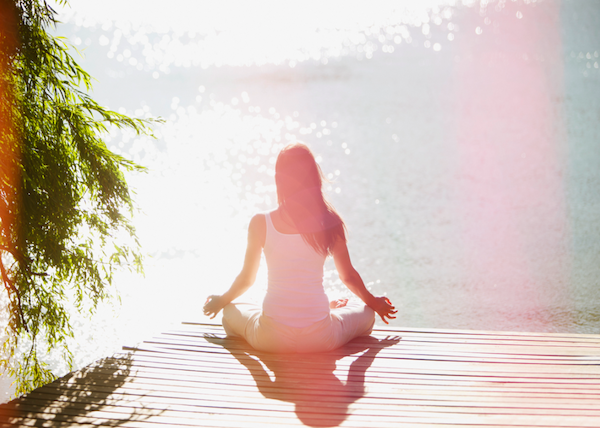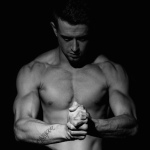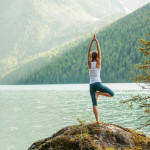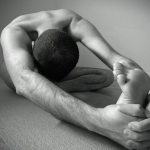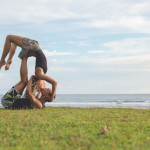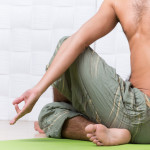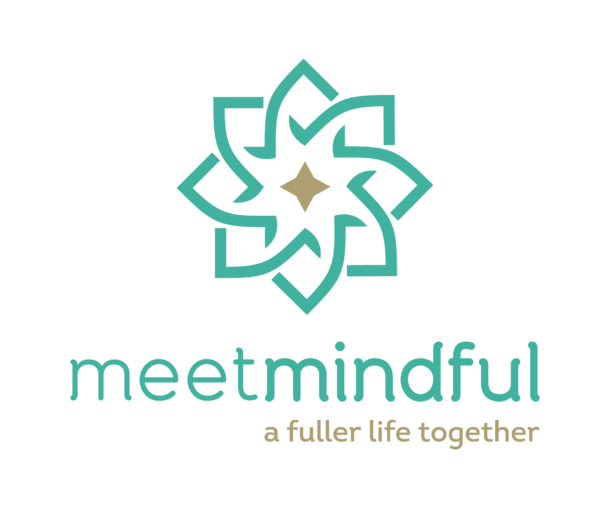No two bodies are the same, so every body needs an exercise routine that’s tailored to its unique needs. Unleash your radiance by exercising for your dosha.
As inspiring and lofty as yoga can be, fundamentally, yoga is a practical path that is applicable only to the present moment. Your state of awareness, moment by moment, is where yoga really happens. You can gauge how your practice affects you by reminding yourself, “I am awareness,” and noticing what thoughts and emotions project themselves on the screen of your mind.
After years of practice and examining what thoughts, emotions and physical sensations came up during my yoga practice, I eventually realized that my mind was becoming disturbed, my body not stronger, but weaker, and I believe it was because of the way I was practicing.
Have you ever wondered why some yoga practices seem to leave your mind calm, centered, and balanced, while others make it agitated, irritable, or off center? Why does your body responds to certain styles or postures positively, but others not so much? And have you even injured your body practicing yoga?
The ancient Indian healing system known as Ayurveda can help you answer such questions. According to Ayurveda, different people require very different yoga practices.
Yoga and Ayurveda are two paths intertwined in such a close relationship that it is hard to imagine traveling down one of these paths without knowledge of the other. Ayurveda—which means “knowledge of life”—is the ancient art and science of keeping the body and mind balanced and healthy. Yoga is the ancient art and science of preparing the body and mind for the eventual liberation and awareness of the self. In practice, both paths overlap.
According to Vedic scholar David Frawley:
“Whether it is diet exercise or even meditation, the question is: What is the right practice for us individually? How can we address our real needs on a daily basis? We are recognizing more and more that each individual is unique. The food that is good for one person, even if wholesome, may not be good for another. Herbs and exercise also require an individualized orientation and cannot work the same way for all body types. We have different physical, mental, and spiritual capacities and potentials that require the appropriate personal orientation to develop. We need to know what will work for us. What is our type and what kind of yoga should we follow for it? Particularly, which asana or yoga postures are best for us? Which styles of yoga?”
When determining the kind of yoga practice that is right for your body/mind, the most important factor is your vikruti, or current Doshic condition or imbalance. Your vikruti is, in fact, the single most important determinant of your entire regime. Once you have corrected your imbalance, you can stay in good health by choosing a yoga practice that balances your constitution, or prakruti.
It’s sometimes hard for the layperson to distinguish between characteristics that are inborn, or constitutional, and those that result from an imbalance. Don’t worry, one thing you can do to help establish this differentiation is to take a Dosha Quiz twice (once with your entire life in consideration, going back to your childhood tendencies, and once with the last six months in perspective). Or go see a Practitioner for more insight.
From a Vedic standpoint, much of the exercise recommended today falls short of ideal. It raises the question, why do we need physical activity in the first place?
Charaka, the greatest writer on Ayurveda, said this: “From physical exercise one gets lightness, a capacity for work, firmness, tolerance of difficulties, elimination of impurities, and stimulation of digestion.”
How often does your yoga practice fall short of those ideals? How often do you practice so intensely that you could not perform work afterwards, or even felt your body drained and exhausted?
It is vital that exercise gives more energy than it takes, a consideration that people tend to ignore. One very simple exercise, walking, comes close to being ideal because it is a natural activity that satisfies all three doshas:
- Vata types find that taking a long walk tranquilizes their minds.
- Pitta types like slowing down from a driving pace that often overtakes them during their workday.
- Kapha types feel physically stimulated and lighter; a brisk walk clears out minor congestion.
Since life is generally meant to be comfortable and happy, Ayurveda views exercise as a means to that end. It holds that exercise should always leave you ready for work. Exercise shouldn’t be work itself. Yet, many Americans don’t see it that way. They feel that without grim and determined attitudes, they’re not doing much good for themselves. (Go to the park tomorrow morning and see how many frowns and scowls you see.)
“No pain = No gain” is a myth for most of us.
As a general rule, Ayurveda wants us to exercise up to 50 percent of our maximum capacity. These lower limits are not detrimental to fitness. In fact, they make exercise more efficient because you are not giving your body so much repair work to do afterwards. You can think of this like driving a car. Sure you can drive 100 mph everywhere you go, but your chance of getting a ticket is higher, your engine gets taxed, and your gas mileage sucks.
Body Type Exercise:
Every time you move your body, you are talking to your doshas. Because each dosha has its own emphasis, there are three kinds of benefits that all balanced exercise brings:
- Vata: Poise, agility, limberness, coordination, focus, and inner exhilaration
- Pitta: Warming up the body, circulation of blood to all parts, increased heart capacity
- Kapha: Increased strength and stability, steady energy
If you never get off of your couch to exercise, obviously you will not experience these benefits. However, many active people with firm muscles and sound hearts don’t experience them either. Most exercise programs today are dedicated to increasing the capacity of the cardiovascular system, which puts a heavy emphasis on Pitta Dosha.
Vata Type Yoga & Exercise:
Intensity: light
Season of Importance: Late Fall/Winter
Type: Slow Vinyasa, Restorative, Gentle Yin Yoga, dance aerobics, walking, short hikes, light bicycling
Keywords: calming, grounding, warming, slow, routine, contemplative
Lots of Vata types have bursts of energy but tire quickly. They excel at bouncing and stretching—being lithe and lively they like yoga and walking as long as they do not become too tiring. Anyone dominated by Vata Dosha must always be careful not to get carried away and push themselves too far. This is the primary caution for them, since Vatas typically start with a bang but don’t know their limits (particularly when out of balance). Half an hour of mild exercise a day can be enough. Practice indoor in the winter.
Yoga for Vata
Meaning “that which blows,” Vata is related to the elements of air and ether. It provides the motion necessary for our physical, mental, and emotional processes. Vata types are mentally quick, alert, flexible, and creative.
When out of balance, Vatas feel over-amped and ungrounded, and may suffer from mental and physical restlessness, insomnia, or anxiety. They’re the ones who eat while talking on their cell phone while on a treadmill. Vata energy can be very uneven, marked by spurts of frenetic activity followed by exhaustion. This dosha can get aggravated by dry, cold, and windy weather, over stimulating environments, travel, lack of routine, and a lot of change.
You can ground (earth) and soothe (water) excess Vata by bringing the Mothering principle into your life. This includes learning how to calm and nurture yourself. Slowing and quieting down. Keeping warm and moist. Establishing self-care boundaries and a supportive routine.
If you are a Vata type person or have excess Vata, you should have a consistent yoga practice that is slow, steady, strong, and grounding. The right yoga practice will help you prevent and correct muscle imbalances, bone conditions, structural distortions, and degeneration of bone tissue caused by excess Vata. Yoga will also help you relieve forms of coldness, dryness, stress, nervousness, fear and anxiety held in the bones, nerves, and joints.
Asanas
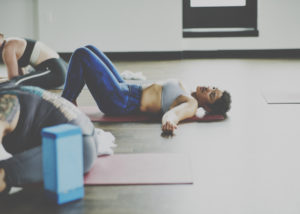 Poses that work on the colon (the bodily seat of Vata), intestines, pelvis, lumbar spine, and sacroiliac area balance Vata by bringing energy down into the base of the torso.
Poses that work on the colon (the bodily seat of Vata), intestines, pelvis, lumbar spine, and sacroiliac area balance Vata by bringing energy down into the base of the torso.- Spinal twists and inversions of all kinds soothe this dosha.
- Sitting and standing forward bends are choice poses, particularly for insomnia; boat, plank, staff, and plow are also powerful Vata-reducers.
- To support grounding, work with standing poses such as mountain, triangle, warrior, and tree. You can even use a wall and close the eyes for therapeutic effect.
- Avoid back bends, such as bow, cobra, pigeon, and arch, which increase Vata, or hold them briefly.
- If you enjoy vinyasa, do sun salutations S-L-O-W-L-Y. Let child’s pose lead you back to your innate innocence and trust.
- End your practice with a long savasana (20–30 minutes); it is really okay to do NOTHING for a while.
Pranayama
Activating breathing practices such as those used in Kundalini Yoga can aggravate Vata, so only use them when you are feeling balanced and in need of clearing or energizing. Integrating and deeply relaxing, alternate-nostril breathing is a better ongoing practice for you. The bhramari (bee) breath, named after its high-pitched resonating sound, also calms Vata.
Pitta Type Yoga & Exercise:
Intensity: Moderate
Season of Importance: Summer
Type: Vinyasa Yoga, Iyengar Yoga, Ashtanga Yoga, Skiing, brisk walking or jogging, hiking and mountain climbing, swimming
Keywords: cooling, heart-opening, noncompetitive, slow.
Pitta types tend to have more drive than endurance. They are good at all exercise in moderation.
Because they like a challenge, Pittas enjoy skiing, hiking, mountain climbing and other sports that bring a sense of accomplishment at the end of the day. Athletes in competitive sports must have a good deal of Pitta to give them a fighting spirit, but don’t be fooled—this is not the Dosha for intense competition. Pittas hate to lose. This motivates them more than the satisfaction of winning. Pittas will grimly make themselves run, jog, or weight train, but gain very little inner contentment from their efforts. You already know whether you’re falling into this trap.
If you stew over every bad shot on the golf course or want to drill your tennis opponent with the ball, give up these sports. Anyone who needs to kill somebody on the court is suffering from a gross Pitta imbalance. Also, the start-stop rhythm of competition sports is not as good for your body as a half an hour of continuous motion. Walking briskly for half an hour will take the feistiness out of your system better than any competitive sport.
Yoga for Pitta
Associated with the elements of fire and water, Pitta is pure vitality, enthusiasm, and intensity. Meaning “that which cooks,” Pitta regulates our digestion, metabolism, appetite, vision, and forms the basis of our intellect and capacity for discernment. Solidly built, strong, passionate, and ruddy in complexion, Pittas sunburn easily, lose hair early, and burn the candle at both ends. Embodying the ennobling characteristics of a warrior, you are known for your willpower, focus, courage, goal-orientation, decisiveness, self-discipline, and mental acuity.
When out of balance, you may become competitive, fast, quarrelsome, dominating, impatient, resentful, intolerant, and fanatical. The bodily seats of this dosha are the small intestine, eyes, and blood. The liver also plays an important role in Pitta-related bodily functions. Excess Pitta manifests through inflammation, infection, and irritation.
If you are a Pitta type or have excess Pitta, you should have a regular yoga practice that is gentle, cooling, relaxing, forgiving, and surrendering in nature. The right yoga postures help you maintain good strength, flexibility, and circulation without over-heating yourself. The yoga postures will also help you calm your mind, release aggressiveness, decrease competitiveness, and channel any anger or irritation if practiced properly.
Asanas
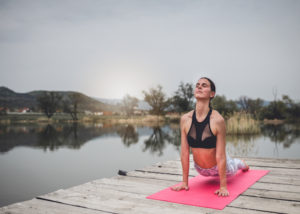 Poses that promote coolness, ease, and lightness of being while releasing heat and stress in the small intestine, central abdomen, blood, and liver are optimal.
Poses that promote coolness, ease, and lightness of being while releasing heat and stress in the small intestine, central abdomen, blood, and liver are optimal.- All forms of standing forward bends and inversions reduce Pitta.
- Sitting poses such as cobbler, hero pose, and yoga mudrasana, and sitting forward bends such as head-to-toe, half- and full-lotus forward bend, and tortoise are also recommended.
- Work the abdominal area with twists such as maricyasana.
- Other Pitta-reducers include cobra, half-bow, and boat.
- Experiment with moon salutation—while sun salutation heats, this vinyasa has a cooling effect.
- Warrior, chair pose, headstands, arm stands, and lion increase Pitta—if you enjoy these poses, hold them briefly.
Pranayama
Keep your breath cool, relaxed, and diffuse, exhaling through your mouth periodically to release heat. Since ujjayi breathing is heating, consider simply using the yogic three-part breath. Sheetali, which is designed to cool you off, and alternate-nostril breathing are also recommended. As for the breath of fire, if you are calm, clear, and cool, go ahead, but if you are already irascible, wait or warn your friends ahead of time.
Kapha Type Yoga & Exercise:
Amount: moderately heavy
Season of Importance: Late Winter-Spring
Type: Hot Yoga, Vigorous Vinyasa, Kundalini Yoga, weight training, running, rowing, dance
Keywords: vigorous, stimulating, challenging, assertive, warming
Kapha types have strong steady energy but often lack agility. They generally are good at all exercises and become better when they become more limber and balanced. Because of their physical strength, Kaphas excel at endurance sports. They have the natural build for a long run or distance rowing. Pulsing blood through their veins feels good to Kaphas. Bringing up a good sweat without exhaustion will clear up Kapha congestion, moving excess fat and water that needs to be pushed out.
Being a cold Dosha, Kapha resents it if you go out into the cold/damp to run or row. In winter, Kapha types should stay indoors and stick with aerobics or vigorous yoga.
Yoga for Kapha
Meaning “that which sticks,” Kapha is related to the elements of earth and water. Physiologically, Kapha binds the structure of the body, lubricates the joints and skin, and promotes tissue building, immunity, and healing. It also provides stability, stamina, and strength. Kapha types tend to have a slow metabolism, a heavy yet sturdy body, large/soft eyes, and thick/oily hair and skin.
When in balance, they are the best friend a person could have—calm, devoted, consistent, tolerant, and patient. Out of balance, they are their own worst enemy, being prone to mental sluggishness, procrastination, lethargy, weight gain, excessive sleep, and problems letting go. Their innate and formidable capacity to ground and persevere turns to inertia and lassitude.
If you are a Kapha type, when it comes to practice, you have the tough job of kick-starting yourself. Since you flourish in relational contexts, recruit a buddy to practice or go to class with you. Remember Newton’s First Law of Motion: a body at rest tends to remain at rest unless acted upon by some outside force.
Asanas
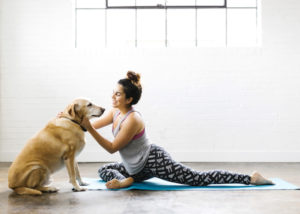 The bodily seats of Kapha are the lungs and the stomach/diaphragm area. Focus on asanas that open the chest and work the midsection.
The bodily seats of Kapha are the lungs and the stomach/diaphragm area. Focus on asanas that open the chest and work the midsection.- Headstand, handstand, and bow are premier Kapha-reducers.
- Back bends such as cobra, pigeon, camel, and locust will greatly serve your lungs.
- To build endurance, hold standing poses such as forward bend, triangle, revolved triangle, the warrior series, tree, and half moon a long time, and repeat, repeat, repeat.
- Other effective postures include shoulder stand, plow, lion, and spinal twists.
- Jumping to transition between poses will give you a better workout.
- You should also come to love sun salutations more than life itself (and if you practice as a form of worship to the Divine, you actually will).
- Finally, use a shorter savasana (5–15 minutes) to conclude your practice.
Pranayama
Because you need to open your lungs, you can benefit from the vigorous breathing practices of Kundalini Yoga. During asana practice, use the full yogic breath in conjunction with the heating ujjayi breath. Bhastrika, kapalabhati, and right-nostril breathing are also cleansing, energizing, and warming for you.
If this article made you frustrated, don’t worry. You may be on to something. It may be a good sign that there were chords of truth struck. You might be one step closer to personal radiance.
Yoga and Ayurveda together provide us with the tools to purify and harmonize the being we identify within, so we can eventually find ourselves liberated from this pendulum swing between our mental thoughts, emotional experiences, and physical sensations. It’s not easy realizing that we are so much more than this, but with the minimizing of the extremes, the task of awakening to awareness of the self becomes possible. If you want it.

